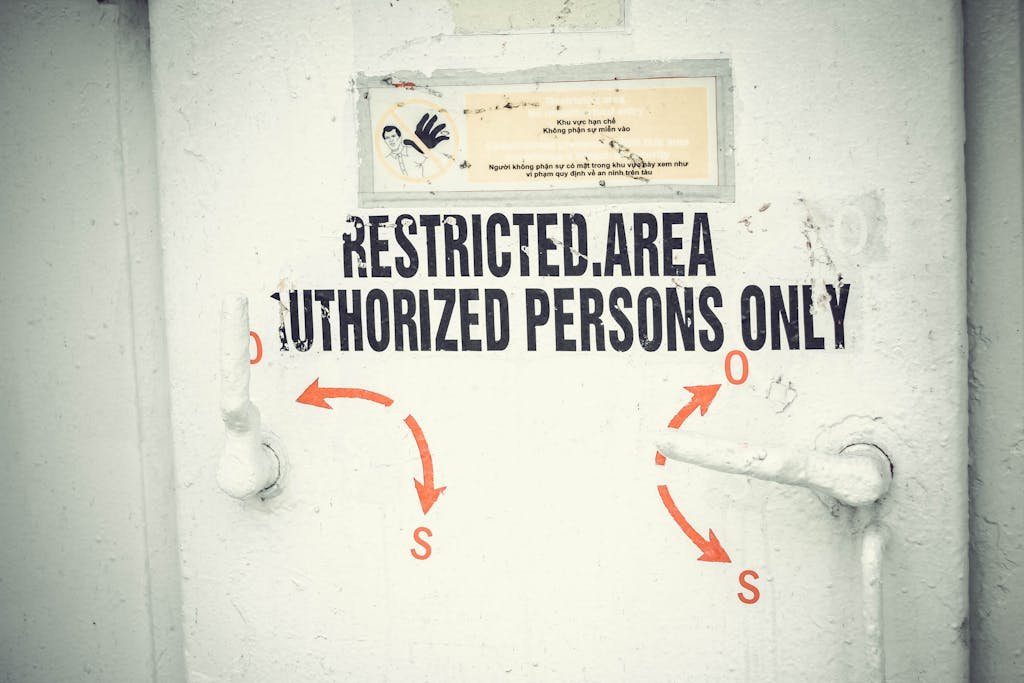Guide to Complying with the NIS2 Directive: Creating an Incident Management Framework for Security Incidents
Introduction to the NIS2 Directive
The NIS2 Directive represents a significant evolution in the European Union’s approach to cybersecurity, replacing the original NIS Directive that was established in 2016. The primary objective of the NIS2 Directive is to enhance the level of cybersecurity across the Union, ensuring a high common level of cybersecurity for networks and information systems within the EU’s critical sectors. It aims to address the growing cyber threats and improve the resilience of essential services and digital infrastructure.
One of the key distinctions between the NIS2 Directive and its predecessor is its broader scope and stricter compliance requirements. While the original NIS Directive applied to operators of essential services (OES) and digital service providers (DSP), the NIS2 Directive extends its reach to include a wider range of sectors and services. This includes sectors like energy, transportation, banking, healthcare, and digital infrastructure, which are deemed critical for the functioning of society and the economy.
The purpose of the NIS2 Directive is to ensure that businesses within these critical sectors implement robust cybersecurity measures to protect against security incidents. This includes not only preventing incidents but also detecting and responding to them effectively. The directive mandates that member states establish a national strategy on cybersecurity and designate competent authorities to oversee compliance and enforcement. It also emphasizes the importance of incident reporting, requiring entities to report significant incidents to the appropriate authorities without undue delay.
Compliance with the NIS2 Directive is crucial for businesses operating within the specified sectors. Non-compliance can result in severe penalties, including fines, and can also damage an organization’s reputation. Therefore, it is imperative for businesses to understand the requirements of the NIS2 Directive and take the necessary steps to align their cybersecurity practices with its mandates. By doing so, they can not only avoid potential penalties but also contribute to the overall security and resilience of the EU’s critical infrastructure.

Understanding Security Incidents and Their Impact
Under the NIS2 Directive, a security incident is broadly defined as any event that compromises the availability, integrity, or confidentiality of network and information systems. This can encompass a wide range of events, from data breaches and ransomware attacks to service disruptions and unauthorized access attempts. Each type of security incident presents unique challenges and potential risks to organizations.
Data breaches, for instance, involve the unauthorized access, disclosure, or theft of sensitive information. Such incidents not only jeopardize the privacy of individuals but also expose organizations to significant financial losses and legal repercussions. Ransomware attacks, where malicious actors encrypt data and demand payment for its release, can paralyze business operations, leading to extended downtime and costly recovery efforts.
Service disruptions, whether due to Distributed Denial of Service (DDoS) attacks or system failures, can cripple an organization’s ability to deliver critical services. This can result in substantial revenue loss, tarnished reputation, and diminished customer trust. Unauthorized access attempts, even if unsuccessful, can signal vulnerabilities in the system that need immediate attention to prevent future exploitation.
The impact of security incidents extends beyond immediate operational disruptions. Regulatory compliance is a critical consideration, as failure to report and manage incidents as mandated by the NIS2 Directive can lead to severe penalties. Moreover, the erosion of customer trust following a security incident can have long-term consequences, affecting customer retention and brand loyalty.
Understanding the various types of security incidents and their potential impact is crucial for organizations aiming to comply with the NIS2 Directive. By recognizing the threats and preparing accordingly, businesses can mitigate risks and ensure a robust incident management framework that safeguards their operations, reputation, and regulatory standing.
Key Requirements of the NIS2 Directive
The NIS2 Directive sets forth a comprehensive framework aimed at enhancing the security and resilience of network and information systems across the European Union. One of the core requirements is the implementation of robust risk management measures. Organizations must conduct detailed risk assessments to identify potential vulnerabilities and threats to their critical infrastructure. These assessments serve as the foundation for developing and executing effective security strategies tailored to mitigate identified risks.
Another critical component of the NIS2 Directive is the obligation for timely incident reporting. Organizations are mandated to report any security incidents that have significant impact on the continuity of critical services to the relevant national authorities. This process facilitates a coordinated response to cyber threats and enables authorities to provide support and guidance during incidents. The directive specifies clear timelines and procedures for incident notification, ensuring that information is shared promptly and efficiently.
Cooperation with national authorities is another pivotal requirement under the NIS2 Directive. Entities must engage in active collaboration with designated authorities, sharing relevant information and participating in joint exercises to enhance overall cybersecurity readiness. This cooperative approach not only improves the organization’s own security posture but also contributes to the collective defense against cyber threats within the EU.
Additionally, the directive outlines mandatory security measures that organizations must adopt. These measures include technical and organizational safeguards such as access controls, encryption, and regular security audits. The aim is to protect network and information systems from unauthorized access, data breaches, and other cyber threats. Organizations are also required to implement incident response plans, ensuring that they are prepared to act swiftly and effectively in the event of a security breach.
Overall, the NIS2 Directive emphasizes a proactive and collaborative approach to cybersecurity, requiring organizations to adopt comprehensive risk management practices, ensure timely incident reporting, and engage in ongoing cooperation with national authorities. By adhering to these requirements, entities can significantly enhance their ability to protect critical infrastructure and maintain the integrity and availability of essential services.

Steps to Create an Incident Management Framework
Developing a robust incident management framework is integral to ensuring compliance with the NIS2 Directive and safeguarding your organization’s cybersecurity posture. The following essential steps can guide you through the process:
1. Establish an Incident Response Team: The foundation of an effective incident management framework begins with assembling a multidisciplinary incident response team (IRT). This team should consist of members from various departments, including IT, legal, communications, and executive management. The IRT must have clearly defined roles and responsibilities to ensure a coordinated and efficient response to security incidents.
2. Define Incident Detection and Reporting Procedures: Early detection and prompt reporting of incidents are crucial. Establish procedures for identifying and reporting potential security breaches. Implement monitoring tools and systems to detect anomalies and unusual activities. Ensure that all employees are aware of the reporting mechanisms and encourage a culture of timely reporting.
3. Incident Classification and Prioritization: Not all incidents are equal in impact and urgency. Develop a classification system to categorize incidents based on their severity and potential impact on business operations. Prioritize incidents to allocate resources effectively and respond to the most critical threats promptly.
4. Response and Mitigation Strategies: Define clear response and mitigation strategies for different types of incidents. This includes immediate containment measures, eradication of the threat, and recovery plans to restore normal operations. Ensure that your strategies are flexible and can adapt to the evolving nature of cyber threats.
5. Communication Plans: Effective communication is vital during an incident. Develop a communication plan that outlines how information will be shared internally and externally. Identify key stakeholders and ensure they are kept informed throughout the incident lifecycle. Transparent communication helps maintain trust and ensures coordinated efforts.
6. Post-Incident Review and Lessons Learned: After resolving an incident, conduct a thorough post-incident review to analyze the response and identify areas for improvement. Document lessons learned and update your incident management framework accordingly. Continuous improvement is essential to strengthen your organization’s resilience against future incidents.
Implementing Detection and Monitoring Solutions
Effective detection and monitoring solutions are fundamental to complying with the NIS2 Directive and ensuring robust cybersecurity. These technologies enable organizations to identify and respond to security incidents promptly, minimizing potential damages and maintaining operational continuity. The selection and deployment of appropriate tools, such as intrusion detection systems (IDS), security information and event management (SIEM) systems, and real-time monitoring tools, are critical components of a comprehensive incident management framework.
Intrusion detection systems (IDS) play a vital role in monitoring network traffic for suspicious activity and potential threats. By analyzing data packets, IDS can detect anomalies or known attack patterns, providing alerts that enable swift action to mitigate risks. When selecting an IDS, organizations should consider factors such as detection accuracy, ease of integration with existing infrastructure, and scalability to accommodate future growth.
Security information and event management (SIEM) systems are another cornerstone of effective detection and monitoring. SIEM solutions aggregate and analyze log data from various sources across the network, offering a centralized view of security events. This enables organizations to correlate events, identify patterns, and detect advanced threats that might evade individual security tools. When deploying a SIEM system, it is essential to configure it for optimal performance, ensuring it captures relevant data and generates actionable insights without overwhelming security teams with false positives.
Real-time monitoring tools complement IDS and SIEM systems by providing continuous surveillance of the network environment. These tools can detect and respond to threats as they occur, reducing the time between detection and remediation. Best practices for continuous monitoring include setting up automated alerts, regularly updating threat intelligence feeds, and conducting periodic reviews to ensure monitoring parameters remain aligned with evolving security landscapes.
Integrating threat intelligence into detection and monitoring solutions enhances their effectiveness by providing context to security events. Threat intelligence feeds offer valuable information about emerging threats, tactics, and indicators of compromise (IOCs). By incorporating this data, organizations can improve their ability to anticipate and respond to sophisticated attacks.
In summary, implementing robust detection and monitoring solutions is crucial for maintaining cybersecurity and complying with the NIS2 Directive. By carefully selecting and deploying IDS, SIEM, and real-time monitoring tools, and integrating threat intelligence, organizations can build a resilient incident management framework capable of addressing the dynamic threat landscape.
Developing an Incident Response Plan
Creating an effective incident response plan is critical for organizations aiming to comply with the NIS2 Directive. An incident response plan outlines the necessary steps to tackle security incidents, ensuring a structured and efficient approach. The key components of an incident response plan include preparation, identification, containment, eradication, recovery, and lessons learned.
Preparation
Preparation involves establishing and training an incident response team. This team should be well-versed in the organization’s infrastructure, potential threats, and response strategies. Detailed documentation, such as contact lists and communication protocols, should be developed to facilitate rapid response. Regular training and simulations are essential to ensure readiness.
Identification
Identification is the process of detecting and reporting security incidents. Implementing robust monitoring tools and establishing clear criteria for incident identification are pivotal. Once an incident is detected, it should be promptly documented with detailed information, including the type, scope, and potential impact of the threat.
Containment
Containment aims to limit the damage caused by the incident. This step involves isolating affected systems and preventing the spread of the threat. Short-term containment measures focus on immediate response, while long-term actions address underlying vulnerabilities to prevent recurrence. Clear guidelines for containment actions should be established to ensure swift and effective intervention.
Eradication
Eradication involves removing the root cause of the incident. This step requires thorough analysis to identify and eliminate malicious components. It may involve applying patches, updating software, or reconfiguring systems. Ensuring all traces of the threat are eradicated is crucial to prevent future incidents.
Recovery
Recovery focuses on restoring affected systems and services to normal operation. This involves validating the integrity of systems, restoring data from backups, and monitoring for any signs of further compromise. A step-by-step recovery process should be outlined, including priorities and timelines for restoring critical services.
Lessons Learned
After an incident, it is essential to conduct a thorough review and analysis to identify strengths and weaknesses in the response. Documenting lessons learned helps improve future incident response efforts and strengthens the overall security posture. This step should include a debrief with all involved parties to gather insights and recommendations for enhancement.
Below is a template for an incident response plan:
Incident Response Plan Template
1. Preparation: Define team roles, communication plans, and necessary tools.
2. Identification: Establish detection mechanisms and criteria for incident recognition.
3. Containment: Outline immediate and long-term containment strategies.
4. Eradication: Detail the steps for removing the threat and addressing vulnerabilities.
5. Recovery: Plan for system restoration and data integrity verification.
6. Lessons Learned: Conduct a post-incident review and document insights for improvement.
Organizations can customize this template to fit their specific needs, ensuring a comprehensive and effective incident response plan. This structured approach not only aids in compliance with the NIS2 Directive but also enhances overall cybersecurity resilience.
Training and Awareness Programs
Regular training and awareness programs are essential components in fostering a security-conscious culture within any organization. To align with the NIS2 Directive, it is imperative that all employees receive continuous education on security protocols and practices. Such programs not only enhance the overall security posture but also significantly improve incident response capabilities.
One of the critical types of training that organizations should implement is phishing simulation exercises. These exercises help employees recognize and respond appropriately to phishing attempts, which are among the most common cyber threats. By simulating real-world scenarios, employees can practice identifying suspicious emails and take the correct action without the risk of actual compromise. This proactive approach mitigates the risk of successful phishing attacks and enhances overall cybersecurity resilience.
In addition to phishing simulations, incident response drills are crucial for preparing employees to handle security incidents effectively. These drills should simulate various types of security breaches, enabling teams to practice their response strategies in a controlled environment. This hands-on experience is invaluable in ensuring that personnel are well-versed in their roles during an actual incident, minimizing response times and reducing the potential impact on the organization.
Security awareness campaigns are another vital aspect of an effective training program. These campaigns can include informational sessions, newsletters, and interactive workshops designed to keep security at the forefront of employees’ minds. Topics may range from password management and data protection to the latest emerging threats. Consistent exposure to security-related information helps embed a culture of vigilance and responsibility, making every employee an active participant in the organization’s security efforts.
Ultimately, well-structured training and awareness programs are indispensable in building a robust security culture. By regularly educating employees through phishing simulations, incident response drills, and comprehensive awareness campaigns, organizations can significantly enhance their ability to manage and respond to security incidents in compliance with the NIS2 Directive.
Regular Audits and Compliance Checks
Regular audits and compliance checks are instrumental in ensuring continuous adherence to the NIS2 Directive. These processes help organizations maintain the integrity and effectiveness of their security frameworks, offering a proactive approach to identifying and mitigating potential gaps. Audits should encompass a comprehensive review of security controls, incident response procedures, and relevant documentation to verify that all components align with the requirements set forth by the NIS2 Directive.
A well-structured audit checklist is essential for thorough and efficient evaluations. Key items on this checklist should include:
- Assessment of security controls to ensure they are robust and up-to-date.
- Verification of incident response procedures to confirm they are detailed, accessible, and actionable.
- Review of documentation to ensure accuracy, completeness, and alignment with NIS2 Directive standards.
- Evaluation of staff training programs to ensure ongoing awareness and competence in managing security incidents.
- Inspection of technical infrastructure to identify vulnerabilities and areas for enhancement.
- Analysis of past incident reports to assess the effectiveness of previous responses and identify patterns or recurring issues.
Both internal and external audits play a critical role in this process. Internal audits, conducted by the organization’s own personnel, provide a continuous and detailed examination of security measures and compliance practices. These audits allow for immediate adjustments and improvements based on the findings. Conversely, external audits, performed by independent third parties, offer an objective assessment of the organization’s adherence to the NIS2 Directive. These audits bring a fresh perspective, often uncovering issues that internal teams might overlook due to familiarity or bias.
By integrating regular audits and compliance checks into their operational protocols, organizations can ensure that they remain compliant with the NIS2 Directive. This proactive approach not only helps in maintaining regulatory compliance but also enhances the overall security posture, reducing the risk of incidents and improving the organization’s ability to respond effectively when they occur.
For more articles related to technology, please browse around InnoVirtuoso and find more interesting reads.







